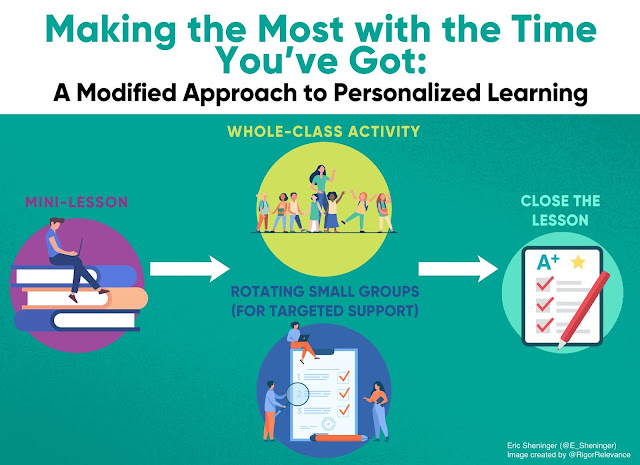These are challenging times, and I cannot express my gratitude enough to dedicated and resilient educators who continue to show up for kids and each other. As someone who is in schools and classrooms on a weekly basis, I am tasked with validating the excellent practices taking place while also providing practical feedback for growth. During my coaching work, I almost always recommend to administrators that they poll their staff to see what support they need. Educator voice is critical and even more so now as people are burnt out and emotionally drained. It’s no shock that their number one response is time. I also hear this when I am facilitating targeted workshops. While this is undoubtedly important, it is also vital to gather input on professional learning and resources that are needed— more of this down the road.
There is only one thing a teacher can control, and that is how time is used when students are in class. While there is always an innate need for more, it behooves us to think about opportunities that already exist to improve lesson effectiveness while also meeting the unique needs of learners that lead to better outcomes. Personalized strategies such as station rotation, choice activities, playlists, and the flipped approach maximize the amount of time that is already available. Data is used to group, regroup, provide targeted instruction, pull individuals for intensive one-on-one support, and differentiate to especially help at-risk learners. These pedagogical techniques also naturally align with MTSS and RTI models, which you can read about in more detail HERE.
Now I know what some of you might be thinking. Personalized learning sounds great in theory, but from a practical standpoint, it takes some time to plan when implementing for the first time. I can’t argue with this point, but it is also a farce to say outright it can’t be done at all grade levels. Hence, the realist in me routinely recommends a modified approach to how time is used no matter the grade level. Here is the strategy:
- Facilitate a mini-lesson that chunks the content.
- Provide the whole class with an activity that you would typically have already planned.
- While the majority of the class works on the assignment, pull small groups of students or individuals for targeted support.
- Close the lesson.
That’s it in a nutshell. No extra time is spent planning, but support within the period is provided to those who need more help, especially at the secondary level, where the physical space might not cater to station rotation. If the goal is to improve learning and close achievement gaps, it is essential to reflect on how time is spent during class, something that I emphasize with a great amount of detail in Disruptive Thinking. From here, specific requests can be made for professional learning support on personalized strategies.
While easier said than done, administrators can look for ways to provide time to teachers for planning and professional learning aligned to some of the ideas shared in this post.

No comments:
Post a Comment